The six-seat retractable single is a market niche to which many prospective owners aspire. And why not? They are as fast as many twins, can carry prodigious payloads, come with plenty of panel space to install any goodies the previous owner neglected and generally are easy to fly. The solo powerplant avoids a twins upkeep costs while most systems-with landing gear being a notable exception-are almost as simple as the trainer first soloed. Despite all that, there really are only three broad models from which to choose: The 36-series Bonanza, Pipers Lance/Saratoga and Cessnas 210 Centurion. Yes, Piper also has the non-pressurized, cabin-class Matrix-ne Malibu-but its not really been on the market long enough or in great enough numbers to make most prospective purchasers lists. And if fixed gear is more your cup of tea, then both Piper and Cessna have other offerings making the cut. But the six-seat retractable offers a good mix of the things pilots with a need to go places and carry more than two people often look for: good range/endurance, loading flexibility, enough cruise speed that inevitable headwinds don’t prolong the agony that much and the ability to mix easily with the airliner flow into the larger airports. Dipping further into the details, someone in this market can easily (and mistakenly, in our view) get scared away from the Bonanza for reasons involving higher purchase and parts prices, and from the Lance/Saratoga by relatively slow cruise speeds and a thirsty engine. Often, the Mama Bear solution is the 210 Centurion; that our mythical buyer probably has substantial time in 100-series Cessnas makes it all the better. But there’s no free lunch: With the Centurion, possible downsides are finding a well-maintained example and keeping it that way, or adopting a problem child and paying to get it right. Centurion maintenance is not trivial, especially the landing gear. If too many items are deferred, the airplane may have annoyingly bad dispatch reliability. Owners tell us theyre better off when they pay the money now, fixing stuff before it breaks, rather than later when there’s little choice. Cruise speeds of about 170 KTAS can be routine, and equipped useful loads easily exceeding a half ton are common. Fuel capacities vary from model to model, but there should be enough to traverse a third of the U.S. without stopping while carrying at least three adults and their bags.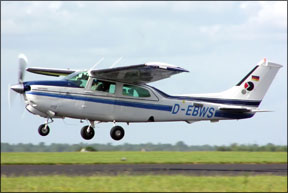
By almost any measure, the 210 is a flexible, successful airplane. Although early models were little more than retractable 182s, it eventually evolved into a sophisticated, sought-after series of three basic types, each with their own characteristics: the normally aspirated 210, the turbocharged version and the first-of-its-kind Pressurized Centurion (which is covered in a separate, dedicated report).
The 210s lineage extends back to the late 1950s, when tricycle landing gear-much less a retractable-signified a newly designed airplane. First certified in 1959 and marketed as a 1960 model, the original 210 and 210A were 2900-pound airplanes powered by a Continental IO-470-E of 260 HP, a fuel-injected version of the 182s engine. Also belying its 182 roots were a strut-braced wing and seating for four. Still, there were major differences.
Chief among them: Cessna engineers had to devise a way to hide its landing gear in the belly. They succeeded, but no one would call the results elegant. Hangar flyers throughout the world still remark on the “twist and tuck” gear retraction design first developed for the 210 and later extended to all high-wing retractable Cessnas. Early models relied on an engine-driven hydraulic pump, which was later upgraded to an electrohydraulic system.
Before that, though, Cessna made minor improvements in 1961, bringing out the 210A, still powered by the IO-470-E, with a 1500-hour TBO. A slightly larger cabin, 100-Pounds gross weight increase and different engine (IO-470-S) resulted in the 210B. Big news came in 1964, with the 210D, which received not only Continentals IO-520-A, but a 1700-hour TBO and another 100-pounds gross weight increase. Kiddie seats in the baggage compartment were optional.
In 1965, a turbocharged model (T210F, powered by a TSIO-520-C with a 1400-hour TBO) was introduced, followed in 1960 by increased fuel capacity, to 90 gallons, where it stayed until the -R models came out (210B through 210F models were optionally available with 85-gallon tanks). By the time production ended with
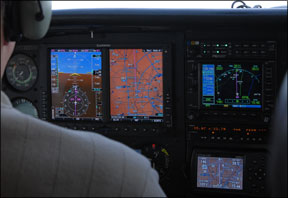
the 1986 model year, the turbocharged models had outsold the normally aspirated version by nearly two to one.
In 1967, Cessna made a major change in the look of the airplane when it replaced the strut-braced wing with a cantilevered design. However, since the airframe break-up rate of the cantilever models exceeds that of strutted ones, some critics question the wisdom of this redesign. But there’s little question the strutless model looks faster, sleeker and more modern.
By the time the 1970 model 210K arrived, Cessna had added extra baggage space, two additional seats and a 3400-pound gross weight. A year later, the 210 got a boost in takeoff horsepower, to 300 HP, still using the tried and true IO-520-L. In 1977, the 210M came out, with a 3800-pound gross weight, to be followed in 1979 by removing the gear doors for the 210N. Ninety gallons of fuel was standard tankage on 210G through -N models.
But the peak had been reached. Only one additional model-the 210R, with the same IO-520-L and a 3850-pound gross-would come out before production ended as Cessna extracted itself from the piston-powered airplane business. The turbocharged models were also retired with the 1986 T210R, by then sporting a 325-HP TSIO-520-CE with a 1600-hour TBO and a 4100-pound gross. Both -R models came with 87-gallon fuel tanks as standard and were optionally equipped at the factory for 115 gallons.
Along the way, in 1972, Cessna reworked the gear system. While still hydraulic, it no longer relied on an engine-driven pump. Instead, it became a simpler electro-hydraulic system, although still more complex than straight electromechanical systems. Seven years later, in 1979, Cessna introduced another simplification by eliminating the main gear doors. This ridded the airframe of actuators, linkages and various switches, yielding a system with fewer failure points. It was also lighter and less expensive to build. Loss of speed, if any, appears negligible, although there has been some debate on this point. (Owners of older models can have their gear doors removed if desired.)
Since the Centurions were-and are-highly desired as instrument aircraft, Cessna pioneered electrical redundancy in singles with optional dual alternators and vacuum pumps. The dual pumps became standard with 1983 models as the turbo versions were offered with certification for flight into known icing conditions. Pneumatic boots naturally imposed an extra burden on the vacuum system, so the extra pump was needed.
Performance, Comfort
Light on the controls, sports car-like handling, delightfully well-balanced are all adjectives used to describe how airplanes handle. None of them apply to the Cessna 210. The Centurion is, at best, a truck. Pitch forces are relatively heavy and although roll rate is adequate, the controls are not we’ll harmonized when compared to, say, the 36-series Bonanzas.
One owner told us the 210 “is nice and stable. Put it somewhere and it stays there.” Others have told us if you don’t learn to trim precisely, hitting the airplanes target speeds for approach and landing will be like a workout in the gym. But set the power and trim correctly and its childs play. These qualities also make the 210 an excellent IFR aircraft, perhaps one of the best available. Once trimmed, it goes where you point it and although some owners complain about the ride in turbulence, there’s never any question of control.
Thanks to limited elevator travel, the Centurion is tough to wrangle into a full-stall break, so there’s nothing particularly nasty about them. Since its the heaviest airplane in its class, it has to be handled with respect, especially on landing. Its
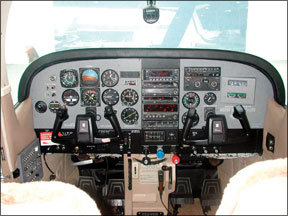
not difficult to land, mind you-especially when there’s some weight in the back-but it suffers its share of hard landings, swerves, runway overruns and gear collapses. Again, if trimmed on speed, the 210 can be landed with no undue strain.
Speed is the 210s true forte. Owners tell us that real-world cruise speeds lie in the 160 to 170-knot range, with climb rates of about 750 FPM at 120 knots indicated, although many do cruise climbs of 500 FPM all the way to altitude for better speed and cooling.
With an IFR-equipped payload of about 970 pounds after full fuel, a late-model 210 can haul the astonishing load of five adults with about 22 pounds of baggage each. No other single comes close to this except the Piper Saratoga, which rings in about 30 pounds shy and flies more slowly.
Furthermore, the Centurions have an unusually broad center of gravity envelope that tolerates loading extremes that would make other models in this class virtually unflyable, namely the Bonanza. When all out payload and speed are important, the 210 is hard to beat.
Although most Cessnas have an excellent reputation for short-field operation, an unmodified 210 doesnt shine in this category when compared with its peers. Minimum runway required to clear a 50-foot obstacle is a little over 2000 feet, which is close to the figure given for the A36 Bonanza, but longer by several hundred feet than those posted by the other Bonanzas and Pipers PA-32R.
With a cabin width of 44 inches in the middle and a height of 47 inches, the aircraft has a roomy interior for four adults and perhaps two kids. But, as one owner put it, “There is no way you would ever be able to fit six adults in a 210 for longer than it takes to get an advertising photo.” Ventilation and heating are generally good except for the rear of the cabin (but check an owner comment below for a trick on improving heat distribution).
In general, fit and finish in many Cessnas is not the best and the 210 is no exception: Poorly fitting doors and aging seals occasionally lead to drafty cabins. Owners also complain of water and air leaks, and Royalite interior panels that crack and come apart with age.
The 210 owners who have contacted us are realistic about one thing: This is not a cheap airplane to own. Owners report a significant maintenance burden with annuals that run around $2500 to $3000. Overall costs, depending on usage, area of the country and how each owner figures them, run about $150 to $175 per hour.
Although production of 210s ended in 1986, owners report good parts availability, albeit with high prices. Used parts are sometimes an option, given the relatively high population of 210s.
The main gear doors on 210s have been an ongoing problem for years. One of the more popular mods has been to simply remove them, a step eventually taken by the factory as noted above.
The service difficulty report (SDR) database shows many gear-related problems in the 210. Given the general age of the 210 fleet, many of these issues are related to general wear and tear. Many of them, too, are related to the systems general complexity. On example SDR: “Rivets holding nose gear drag brace fitting in place worked loose over years of operation causing fitting to pull loose from aircraft structure. This, in turn, caused nose gear to retract on ground.”
Various components get blamed for gear problems but the overall issue is sheer complexity: There’s a lot going on when the gear is cycled. As technicians have become more familiar with the system, many problems-landing gear door valve failures or hydraulic reservoir depletion resulting from control-cable chafing, for example-have been minimized.
These days, however, it seems long-term service of basic components like rod ends and other mechanical parts is exacting a toll. Read another SDR entry: “Nose landing gear failed to extend. Nose gear uplock act. clevis assy failed, causing nose gear assy. to stay in up and locked position. Uplock assy is spring loaded to the locked position to relieve hydraulic system press…. Submitter recommends every 100 hours check clevis assy for security of cotter key in clevis assy for locking effectiveness.”
Too, the historic nemesis of older Centurions-fatigue cracks in landing gear saddles-has apparently not abated completely. While a repetitive AD from 1976 addresses the issue, it still crops up from time to time in the SDRs.
All 210s built from 1960 to 1969 live under the shadow of this problem. With luck, the cracks are found during annual inspections and are fixed in any airplanes now on the market. If for some reason theyre missed, the saddles eventually break and the pilot finds out when one landing gear leg hangs up in the halfway position.
Saddle replacement was required for 1960 and 1961 models. But even they must be replaced every 1000 hours. Buyers should check the saddles and replacement times on these aircraft. Some owners simply replace them whether theyre cracked or not. Later, 1968 and 1969 models came with improved saddles as original equipment, but they must be inspected at 1200 hours and annually thereafter and still run the risk of eventual cracking. The landing gear system was redesigned in 1970, thus apparently ridding the line of the problem once and for all.
If that werent enough, our SDR queries discovered an eye-opening number of entries involving McCauley propellers. Prop problems included cracked and corroded hubs, corroded fasteners and cracked blades. Many of these SDR submissions were from prop shops.
Potential buyers should also take care to check the horizontal tail for a variety of problems, including stabilizer and bracket cracking. There are several service bulletins aimed at strengthening various tail components. And make sure the elevator skin itself has not become corroded thanks to water absorption by the foam filler, especially in older 210s. Back in the 70s, the FAA received numerous reports of damage (loose or broken rivets, cracking and other problems) near the forward fittings, bulkhead and doublers. The problem is confined to fuselage station 209 and Cessna has kits to repair the problems or prevent them from happening.
Cessna has issued service bulletins dealing with cracks in the lower forward doorpost and strut fitting, which affects other Cessna singles as well; if any are found, a mod must be done. If not, repetitive inspections at 1000-hour intervals are called for.
Another bulletin warns of cracking in the nose gear downlock actuator pins. Again, its a repetitive inspection or installation of a service kit. Failure of the part could prevent the gear from locking down. Some notable ADs include: AD 91-22-1, which calls for replacing cracked and chafing wires in the nose gear tunnel on all 210s; AD 94-12-8, regarding calibration and labeling of the fuel system; and AD 93-13-9,
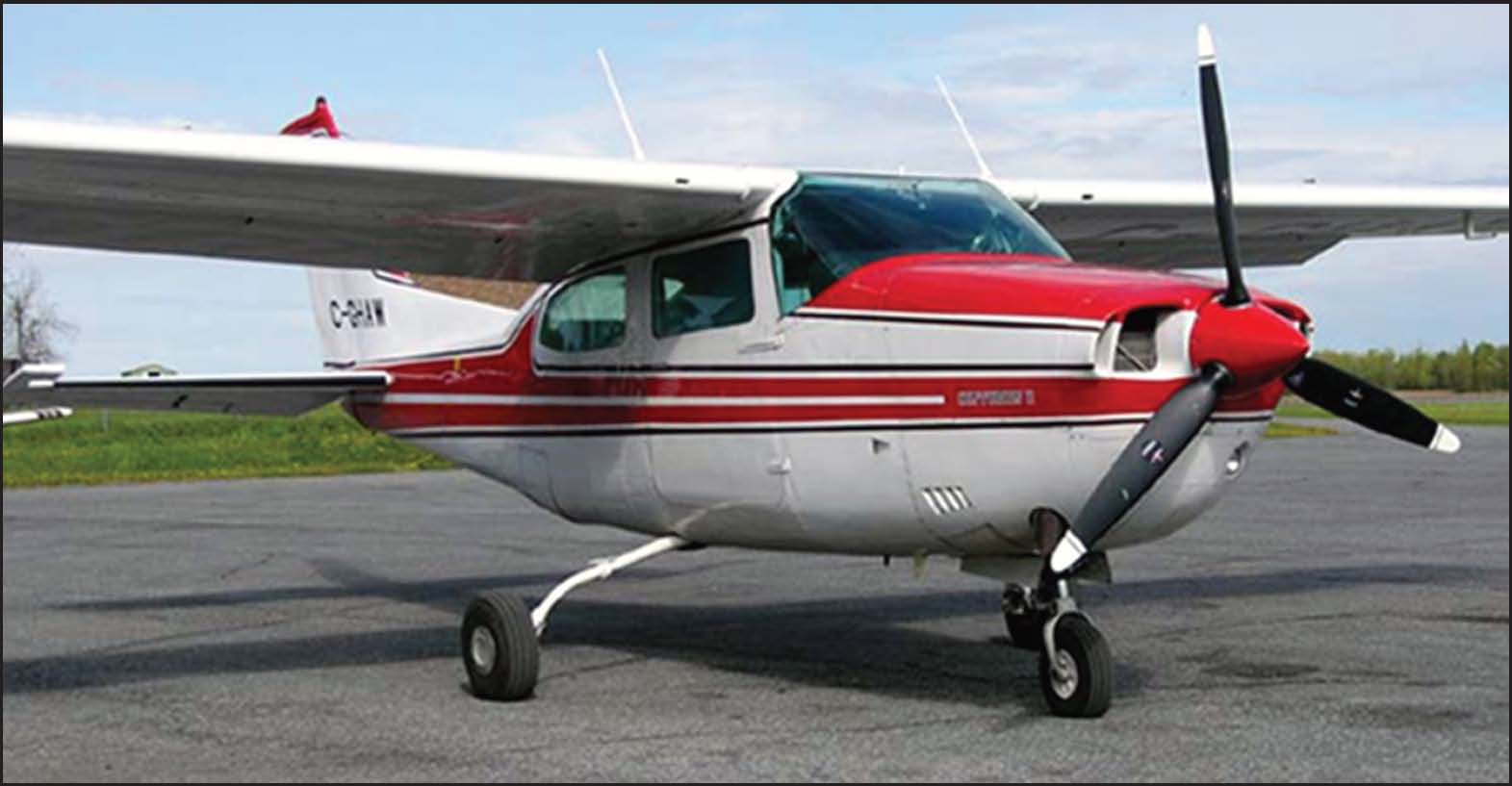
concerning replacement of the air induction hose on T210s.
There’s one more thing to be aware of about the 210, a trait that could bring the pilot who pushes the limits of range to grief. The position of the fuel caps on top of the wing, as designed, places them at the high point of the tanks. Its entirely possible that, if the airplane is not level or if the nose strut is not properly inflated, the tanks cant be fully topped. Given the dismal accuracy to be expected from aircraft fuel gauges, this potential mismatch between what the pilot thinks is on board and what is actually there poses a possible hazard. When flying to maximum range, be diligent in getting the tanks topped correctly.
Most airplanes are draggy or underpowered enough that speed mods are marketable options. Its a testament to the 210s basic good performance that this is not the case. Still, like any high-performance single, the 210 can benefit from the installation of speed brakes. Both Precise Flight (800-547-2558, www.preciseflight.com) and Knots 2U (262-763-5100, www.knots2u.com) make electric-actuated speedbrakes that work we’ll and are a good value.
Also of interest is an IO-550 engine upgrade, which is generally done in conjunction with a prop upgrade. Atlantic Aero (800-334-2001, www.atlantic-aero.com), Texas Skyways (830-755-8989, www.txskyways.com) and John Jewell (866-552-2210, www.johnjewellaircraft.com) offer upgrades to the TCM 550-series engine. (Jewell owns the former Bonaire STCs.) There’s also the aforementioned gear door elimination mod from Sierra Industries (830-278-4481, www.sijet.com). Sierra also makes STOL kits, as does Horton (620-326-2241, www.stolcraft.com).
Other popular mods include high intensity discharge (HID) lighting, available from Knots 2U and Precise Flight, plus auxiliary fuel tanks from Flint Aero (619-448-1551, www.flint-aero.com) and from O&N Aircraft Modifications (570-945-3769, www.onaircraft.com). O&N also offers the Silver Eagle II conversion, which mounts a 450-SHP Rolls-Royce 250-B17F/2 turboprop engine on the non-pressurized 210M, T210M, 210L, T210L, and 210N and T210N. This mod formerly was available only for Pressurized Centurion models.
As an invaluable source of wisdom and support, 210 owners should join the Cessna Pilots Association (805-922-2580, www.cessna.org). CPA has an excellent buyers guide on the 210. Another group is the Cessna Owner Organization at 888-692-3776 or http://www.cessnaowner.org/.
Nearly five years ago, I paid slightly more than $20,000 for share of a mid-time 1970 Cessna 210 with three-bladed prop and main gear door mods. For me and my family of six, it has been a great ride. Last summer, we made a trip from our home in Dallas to Portland, Maine, with a visit to Niagara Falls, returning home through New York City.
Throughout, I could expect an average of 155 knots fully loaded with 90 gallons of fuel, after accounting for headwinds and climbout. But with tailwinds our groundspeed reached as high as 205 knots in level flight. We flew circles around Niagara Falls, and later my children were thrilled as we circled the Statue of Liberty on the 4th of July. The trips cost was considerably less than paying for six airline tickets, and by eliminating some hotel stays it was cheaper than driving my minivan.
My share of fixed costs, for hangar, reserve for annual inspection, insurance, GPS and IFR map subscriptions is only $175 per month. We each contribute $23 per engine hour into an overhaul reserve fund. Operating lean-of-peak, it burns under 15 GPH. Shortly after purchasing the 210, we installed new leather, a Plane Plastics interior and a WAAS-capable Garmin GNS480 with a Garmin MX20 multi-function display.
Since the initial upgrades, we may average around $1000 to $1500 per year per partner for upgrades and maintenance such as tire replacement, oil changes, various random system repairs, and a nose gear door mod to mechanically close the doors without servos. The most important items, for the health of the engine, are a six-cylinder engine analyzer and Blackstone engine oil analysis. Our balanced GAMIjectors allow us to fly lean of peak smoothly, but Blackstone helped us identify a few winter flying episodes where low flights at 75 percent power caused some temporary valve wear. We found out that flying from extremely cold, dense air to hot air in the winter (Iowa to Dallas) will shift the mixture so much richer that you can find yourself directly on top of peak EGT without changing altitude and without touching the mixture knob after originally setting it we’ll lean of peak. But oil analysis has helped us catch all of our issues before they became a trend, and our last oil report said we are flying one of the best-wearing IO-520s Blackstone had seen for some time, at around 1600 hours. Our engine longevity is also a credit to a partnership that flies the airplane almost every week, eliminating internal corrosion that can plague one-owner aircraft.
We stripped out the installed oxygen tanks for added hauling capacity. It will carry so many people and luggage that I cannot rent a mid-sized SUV at our destination without expecting to put luggage under our feet in the car. I am amazed every time I load it up, thinking that this time I am surely exceeding the envelope. But I calculate weight and balance almost every flight, and have never been able to exceed the envelope, even when my heavier older children sit in the way-back seats. It lands gracefully when loaded.
No other new or used piston-powered airplane will fill my need for speed, seat and payload, at any cost. For less than I spent for my Honda minivan, my quarter share gives me a fantastic flying family SUV.
Wes Schlenker,
Dallas, Texas
We have four partners owning a 1977 Cessna T210M. Last fall, we had a new instrument panel installed, including a Garmin G600, Garmin SL-30 nav/com, audio panel and a Garmin 496 dock. The new equipment supplemented our existing Garmin GNS530W. The copilots panel has backup airspeed, attitude indicator, altimeter, and turn and bank instruments. Garmins G600 STC requires standby instruments on the pilot panel be retained.
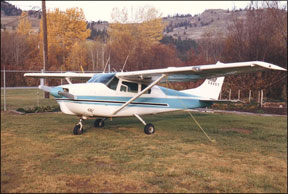
The G600 along with the 530 are great instruments enhancing situational awareness. We saved money by not installing the GDL 69-instead, were using the XM weather and XM radio on the 496. The Century III autopilot works great after Depot Avionics cleaned all the contacts. During the instrument panel modification we located the transponder and JPI EDM 800 to the pilots instrument panel.
We are based at Centennial Airport near Denver. The T210 is a great airplane at altitude since the MEAs west of Denver are 16,000 feet, where we use the factory-installed oxygen system.
David Grossman,
Aurora, Colorado
My partner and I bought our 1982 T210 in 2001. The engine was near TBO, so we put an overhauled engine in shortly thereafter. Weve put 700 hours on the engine since and it has performed admirably. We also put in an engine monitor and a JPI fuel totalizer, and have GAMI fuel injectors. The plane is equipped with a Garmin 430 WAAS, two-axis autopilot, Strikefinder, and has the wiring for a portable Garmin 496 for weather as we’ll as a Zaon unit for traffic, which is displayed on the 496. All have been good additions. We recently upgraded the interior to all leather seats/trim as well.
Using the totalizer and the engine monitor (and having the GAMIs) has allowed us to run lean-of-peak EGT for most of our cruise operations. We typically get around 13 GPH and 160 KTAS down low, while the same power settings yield around 175 KTAS at 18,000 or 19,000. Weve had the plane as high as 25,000 feet, where it runs just fine. I regularly fly from San Jose to Denver and can make it non-stop in no-wind conditions without extended range tanks.
Owner-assisted annuals run in the range of $700 for those years when nothing is wrong (not very often) and can run as high as $5000 in the years when many things are found. This also assumes that you take care of things during the year as they show up. But doing the owner assist is a great learning experience. You learn way more about your plane than you save in labor costs. Insurance has been running around $3500 per year with a hull value of $180K and $1M smooth liability.
I fly Cirruses (Cirri?) pretty regularly as a flight instructor. Comparing the handling of the Cirrus to the 210 is like comparing a sports car to a SUV. But the light controls of the Cirrus also make it more difficult to handle in IMC-the 210 is nice and stable. Put it somewhere and it stays there. With the Garmin 430W and 496 setup, there’s nothing we miss not having that you would get with the Cirrus panel. Try making it to Denver non-stop in a Cirrus!
The SUV analogy is a good one in other areas as well. The 210 will haul full fuel (90 gallons) and still have load left for six adults and some bags. With just four adults or two adults and four kids, and full fuel, there is enough load (and room) left over to take everyones bags and the kitchen sink. The last two seats can be thought of more as kiddie seats. They are comfortable, but there is just not enough length in the fuselage to have six adults stretch out their legs. There is no way you would ever be able to fit six adults in a 210 for longer than it takes to get an advertising photo. Having said that, its tough to load the plane outside of the CG range-something you cant say for pretty much all other GA planes. Its a tradeoff that actually is worth making-many other six-passenger passenger aircraft don’t have the CG range or useful load for six adults anyway.
Ive heard many folks complain about poor heating in the 210. They clearly don’t know how the system works. What most folks will do is turn the heater control to “Max” and the outside air to “Off.” This gives a trickle of very hot air and the front row ends up cooking, the middle row is cool and the third row is often referred to as a meat locker. The solution is easy.
With the heat on full add in some outside air. These two will mix in a plenum above the rudder pedals and you’ll have a hurricane of warm air that will easily reach the baggage area. Ive flown in temps we’ll below zero and had the third row passengers ask me to turn down the heat.
All in all, I think the 210 is the best combination of economy, range, cost and particularly useful load/CG anywhere.
Ken Maples,
San Jose, California


